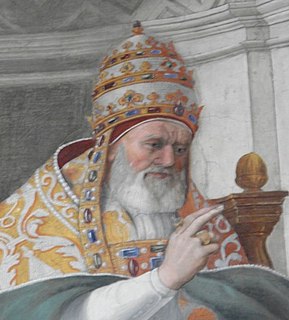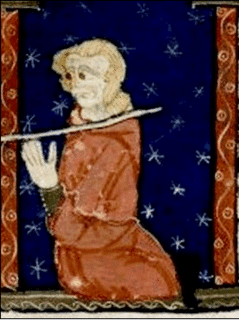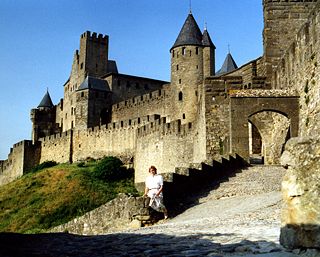Catharism was a Christian dualist or Gnostic movement between the 12th and 14th centuries which thrived in Southern Europe, particularly what is now northern Italy and southern France. Followers were known as Cathars, or Good Christians, and are now mainly remembered for a prolonged period of persecution by the Catholic Church, which did not recognise their unorthodox Christianity. Catharism arrived in Western Europe in the Languedoc region of France in the 11th century, where their name first appeared. The adherents were sometimes known as Albigensians, after the city Albi in southern France where the movement first took hold. The belief may have originated in the Byzantine Empire. Catharism was initially taught by ascetic leaders who set few guidelines and so some Catharist practices and beliefs varied by region and over time. The Catholic Church denounced its practices, including the consolamentum ritual by which Cathar individuals were baptised and raised to the status of "perfect".

The Inquisition, in historical ecclesiastical terminology also referred to as the "Holy Inquisition", was a group of institutions within the Catholic Church whose aim was to combat heresy. Torture and violence were used by the Inquisition for eliciting confessions from heretics. The Inquisition started in 12th-century France to combat religious dissent, particularly among the Cathars and the Waldensians. The inquisitorial courts from this time until the mid-15th century are together known as the Medieval Inquisition. Other groups investigated during the Medieval Inquisition, which primarily took place in France and Italy, included the Spiritual Franciscans, the Hussites and the Beguines. Beginning in the 1250s, inquisitors were generally chosen from members of the Dominican Order, replacing the earlier practice of using local clergy as judges.

The Medieval Inquisition was a series of Inquisitions from around 1184, including the Episcopal Inquisition (1184–1230s) and later the Papal Inquisition (1230s). The Medieval Inquisition was established in response to movements considered apostate or heretical to Christianity, in particular Catharism and Waldensians in Southern France and Northern Italy. These were the first inquisition movements of many that would follow.
Pope John XXII, born Jacques Duèze, was head of the Catholic Church from 7 August 1316 to his death in 1334.

The Albigensian Crusade or the Cathar Crusade was a 20-year military campaign initiated by Pope Innocent III to eliminate Catharism in Languedoc, in southern France. The Crusade was prosecuted primarily by the French crown and promptly took on a political aspect, resulting in not only a significant reduction in the number of practising Cathars, but also a realignment of the County of Toulouse in Languedoc, bringing it into the sphere of the French crown, and diminishing both Languedoc's distinct regional culture and the influence of the counts of Barcelona.

Bernard Gui, also known as Bernardo Gui or Bernardus Guidonis, was a Dominican friar, Bishop of Lodève, and a papal inquisitor during the later stages of the Medieval Inquisition.

Saint Dominic, also known as Dominic of Osma and Dominic of Caleruega, often called Dominic de Guzmán and Domingo Félix de Guzmán, was a Castilian Catholic priest and founder of the Dominican Order. Dominic is the patron saint of astronomers.

Raymond VII was Count of Toulouse, Duke of Narbonne and Marquis of Provence from 1222 until his death.

The Directorium Inquisitorum is Nicholas Eymerich's most prominent and enduring work, written in Latin and consisting of approximately 800 pages, which he had composed as early as 1376. Eymerich had written an earlier treatise on sorcery, perhaps as early as 1359, which he extensively reworked into the Directorium Inqusitorum. In compiling the book, Eymerich used many of the magic texts he had previously confiscated from accused sorcerers. It can also be considered as an assessment of a century and half of official Inquisition in the "albigensian" country.
Ermengarde, was a viscountess of Narbonne from 1134 to 1192. She was the daughter of Aimery II of Narbonne and his first wife, also named Ermengarde.
The Council of Saint-Félix, a landmark in the organisation of the Cathars, was held at Saint-Felix-de-Caraman, now called Saint-Félix-Lauragais, in 1167. The senior figure, who apparently presided and gave the consolamentum to the assembled Cathar bishops, was papa Nicetas, Bogomil bishop of Constantinople.

The Roman Catholic Diocese of Carcassonne and Narbonne is a diocese of the Latin Rite of the Roman Catholic Church in France. The diocese comprises the entire department of Aude. It is suffragan to the Archdiocese of Montpellier.

The Roman Catholic Archdiocese of Toulouse is an archdiocese of the Roman Catholic Church in France. The diocese comprises the Department of Haute-Garonne. Its see is Toulouse Cathedral, in the city of Toulouse, and the current archbishop is Robert Jean Louis Le Gall, appointed in 2006 and translated from the Diocese of Mende.
Raymond de Fauga was a French Dominican, and bishop of Toulouse from 1232 to 1270. He was a significant figure in the struggle in Languedoc between the Catholic Church and the Cathars.

Bernard de Castanet was a French lawyer, judge, diplomat, bishop and cardinal of the Roman Catholic Church. Castanet was not a Dominican, though he had an excellent relationship with the order of the Preachers and occasionally exercised the office of inquisition as a bishop of Albi and a representative of the inquisitor of Carcassonne.

Musée Saint-Raymond is the archeological museum of Toulouse, opened in 1892. The site originally was a necropolis, and in later constructions was a hospital for the poor and pilgrims, prison, student residence, stables, barracks and presbytery, eventually becoming a museum in 1891. It is housed in the former Saint-Raymond university college dating from the sixteenth century that borders Basilica of Saint-Sernin.

Bernard Délicieux was a Spiritual Franciscan friar who resisted the Inquisition in Carcassonne and Languedoc region of southern France.
Geoffroy d'Ablis was a Dominican who led the Inquisition in Carcassonne against Cathars such as Peire Autier from 1303 to 1316. He collaborated with Bernard Gui, the inquisitor at Toulouse.

Jean de Beaune was a Dominican inquisitor in Carcassonne during the early 14th century who played a role in precipitating the Apostolic poverty controversy of the period.
Michel Roquebert was a French writer and historian.














